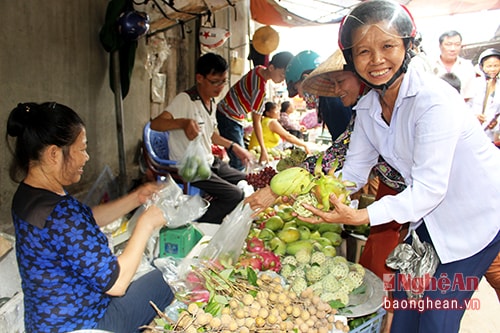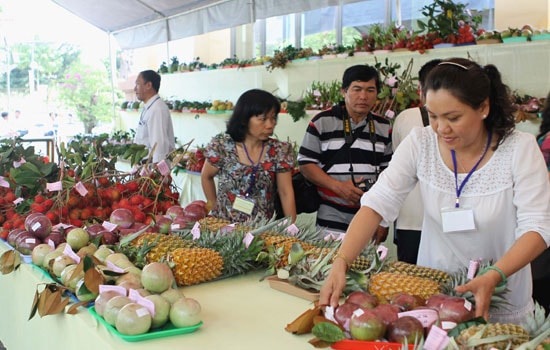Wide open opportunities for Vietnamese fruit exports
With international integration and the removal of many technical barriers, Vietnamese fruits are increasingly opening up for export. However, to export sustainably, Vietnamese fruits need to make great efforts to improve their quality and meet strict requirements on food safety and hygiene.
Many fruits penetrate demanding markets
According to data from the Ministry of Agriculture and Rural Development, in just the first 9 months of 2016, Vietnam's fruit exports reached a value of nearly 1.8 billion USD, an increase of 31% over the same period in 2015, a value nearly equal to the export value of the whole year of 2015 and for the first time, exports exceeded rice.
Vietnamese fruits are expected to bring a lot of profit to the country's agricultural sector. |
» 'Khâu cay noi' rice, a specialty of the border region of Nghe An
Currently, fruit exports have achieved the highest growth rate among agricultural, forestry and fishery products and ranked third in value among the 9 agricultural, forestry and fishery products. Among 29 types of Vietnamese exported fruits, dragon fruit occupies the top position with an export value of more than 700 million USD, equivalent to nearly 50% of the total export value. Next are longan, watermelon... all with impressive growth.
“In the last months of the year, the fruit industry has continuously received many positive signals when mangosteens have been licensed to be exported to the US market, Bac Giang lychees have been brought to Australia... In the future, other specialty fruits such as dragon fruit, rambutan, longan, lychee, and mangosteen will soon increase in volume after being approved by potential markets such as the US, Japan, and Korea...," said Mr. Hoang Trung, Director of the Plant Protection Department.
Currently, domestic fruits have met the strict import requirements of many countries. Up to now, 4 types of fruits including dragon fruit, rambutan, longan, and lychee have been exported to the US and the authorities are negotiating to bring mango and star apple to this market. In the Australian market, lychee has successfully penetrated and in the near future, mango and dragon fruit will be introduced. In Japan, after a difficult negotiation process and the successful establishment of a pest control process, mango and dragon fruit have reached consumers.
Building a key fruit industry
According to Mr. Hoang Trung, after a period of development, the fruit tree area of Vietnam has reached more than 786,000 hectares, of which the Mekong Delta is the largest fruit tree production area, accounting for nearly 40% of the total fruit tree area in the country. Thanks to the impact of scientific and technical advances, conversion of crop varieties, specialized production and improved cultivation skills of gardeners, the productivity and output of fruit trees have also grown strongly.
 |
| Illustration. |
However, domestic fruits are facing many problems affecting sustainable development as they are still mainly produced on a small scale, fragmented basis, so the supply is difficult to ensure both quantity and quality. Meanwhile, fruit export enterprises are still weak and lack experience in trading and management.
"We need to implement basic measures such as sterilization by irradiation, heat treatment, planting and care according to international standards such as Global GAP, as well as gradually synchronously planning raw material areas for each market, each export contract, ensuring the geographical origin of the gardeners according to regulations. Besides, to create more opportunities for fruits, the agricultural sector has determined to build a key fruit industry concentrated in the South to develop in the direction of large-scale commodity production on the basis of promoting comparative advantages and at least 50% of products must meet GAP quality standards to meet export requirements," Mr. Hoang Trung added.
According to economic experts, although fruit exports have been increasing rapidly, most of them are consumed in the form of ripe, fresh fruit after harvest. The proportion of processed, dried, canned, juiced fruits... is insignificant. To maintain and expand the market, it is necessary to re-plan the fruit export production areas and build a quality framework to ensure the criteria. Currently, the agricultural sector has focused on developing 12 main fruits including: dragon fruit, mango, rambutan, durian, star apple, grapefruit, longan, banana, pineapple, orange, custard apple and tangerine. However, to promote the potential of fruit exports, the State needs to create better conditions for businesses to cooperate with production groups with appropriate mechanisms to bring the highest benefits to producers.
According to Le Nghia/baotintuc
| RELATED NEWS |
|---|



